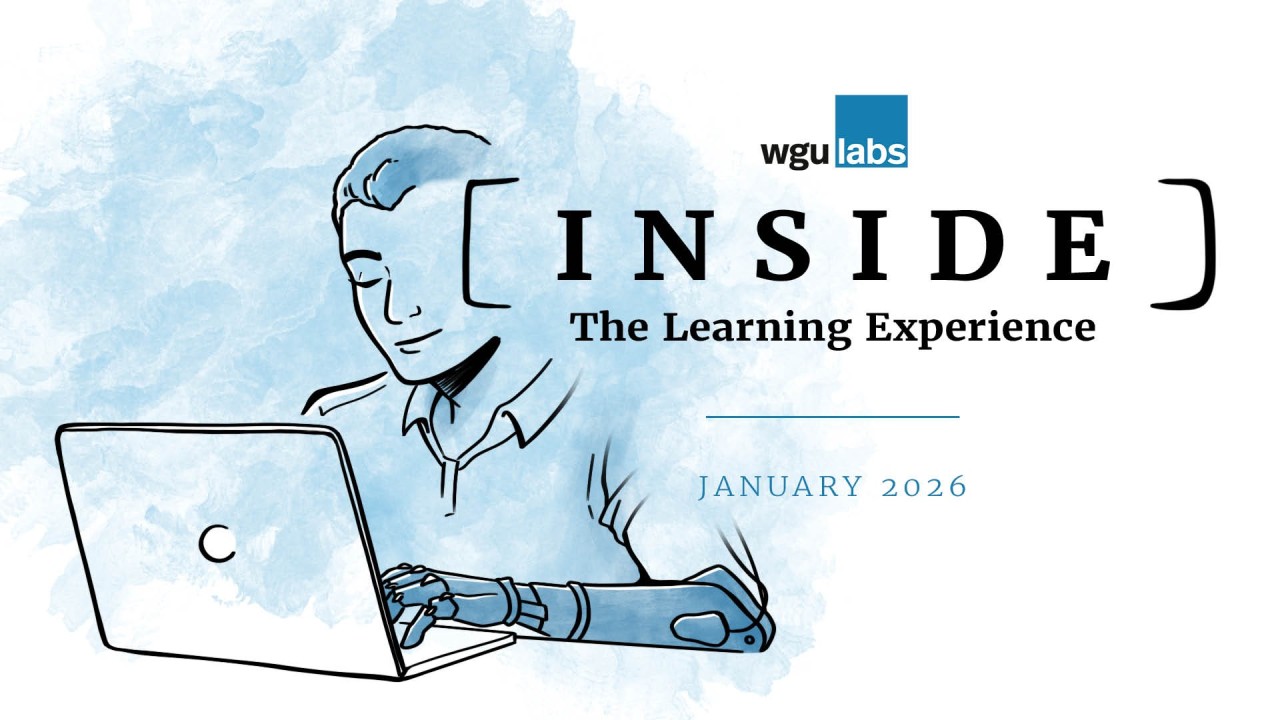.jpg)
Technological advancements, globalization, and rapid innovation are redefining job roles and the skills needed to succeed in them. As the workplace landscape transforms, the learners seeking to secure roles in today’s skills-based workforce need clear and consistent bridges between higher education and the workforce. Career pathways can be the link learners need — if postsecondary leaders can scale and improve recent efforts.
Career pathways have many names. Common alternatives include college-to-career programs and career-connected learning, among others. No matter the name, effective pathway programs provide learners, especially ones furthest from opportunity, a way to build the competencies, skills, experiences, and credentials they need for a fulfilling, financially stable career.
The benefits of clear pathways extend beyond learners. Companies can experience sudden deficits in qualified talent. Filling skills gaps can take years as institutions update curricula and launch new programs. Stronger pathways offer protection for companies and learners alike when industries need to pivot.
Recently, WGU Labs’ Director of Learning and Innovation, Omid Fotuhi, facilitated a conversation with Jeff Wasden, President & CEO of State Business Executives and part of the core management team of National Pathways Initiatives. The two experts explored the current state of pathways — and what higher education leaders can do to help make them smoother.
Clarity Starts with Collaboration
The starting point for clearer pathways, according to Mr. Wasden, is closer collaborations between K-12 schools, post-secondary institutions, and employers. Each of these three stakeholders can play a role in identifying, teaching, and assessing skills needed for a career. Mr. Wasden pointed particularly to the CHIPS and Science Act and the $100 million investment Intel is making in Ohio and nationally to develop semiconductor education and workforce programs as a powerful example of effective collaborations.
Make Pathway Improvement Year Round
Once the right stakeholders are involved, Mr. Wasden said there needs to be greater commitment to pathways year round. He shared that large summits are often great rallying points. The events bring together people from K-12, post-secondary, and industry and energize attendees around an initiative. But once attendees leave the gathering, commitment wanes. Instead, Mr. Wasden advised that large convenings end with clear action steps and accountability to sustain momentum for 365 days.
Mr. Wasden described exactly what happened when 20 members of the College Innovation Network gathered in mid-June for this very reason. The member institutions, alongside stakeholders from higher education, workforce, funding, and policy, explored the barriers impeding the development of effective pathway partnerships from education to careers. But the conversation didn’t end there. Participants brainstormed solutions to bridge the gap through more impactful collaborations. These proposed solutions are now being used to inform potential pilot programs, ensuring the pathways conversation continues.
Don’t Reinvent the Wheel
Another benefit of partnerships, particularly those between educational institutions, is the opportunity to learn from each other. Mr. Wasden said while there have been numerous pathways pilots, few are able to scale. That’s partly because the U.S. education system is so “atomized,” he said. It’s not always clear to K-12 or post-secondary leaders how a program that worked in one area can work in a different context.
But Mr. Wasden said education leaders shouldn’t fear an “R&D” — or rip and duplicate — approach. Adapting and adopting programs that are working elsewhere is much easier than starting to build something from scratch. There are opportunities for leaders to look at community colleges that have made progress, including Lorain County Community College in Ohio, Mississippi Gulf Coast Community College, Northern Virginia Community College, Pima Community College in Arizona, San Jacinto Community College in Texas.
Establish Career Exploration Early
Rather than a rigid track, Mr. Wasden views pathways as opportunities for young people to explore career options.
Job fairs, job shadowing, internships, apprenticeships, and career and technical education are all ways students can start to understand their professional choices. Mr. Wasden argues that career-connected education should start well before students’ junior or senior years of high school to provide students a long runway as they choose a career. With early career exploration, learners can better evaluate whether a career matches their natural skills and passions, and may make it easier for anyone pursuing higher education to decide on a major — though we also think it’s normal to be undecided in college.
Take the Long View
Mr. Wasden encouraged post-secondary leaders to make changes to their institutions that would help them skate to where the puck is going, better anticipating the needs of employers. According to Mr. Wasden and other experts, post-secondary leaders can use job market information, resources like The American Opportunity Index, and faculty-employer connections to determine which fields can offer learners high growth and wage potential.
Taking the long view and anticipating market movements is critical, said Mr. Wasden. He sees the role of post-secondary education as not just training students for one particular job, but for an entire career. He asserted that if an institution only prepares a learner for one job, especially a job that prevents the learner from pivoting to something else when desired, the institution is doing a disservice to the learner. Instead, Mr. Wasden would like to see more post-secondary institutions guide students through pathways to find careers that have the greatest chance for growth.
As Americans continue to question the value of a college degree, well-defined career pathways are an opportunity for post-secondary leaders to create more transparency for learners. By following even just a few of the recommendations above, we can make bigger strides in providing clear pathways and helping learners find meaningful, financially rewarding jobs.




